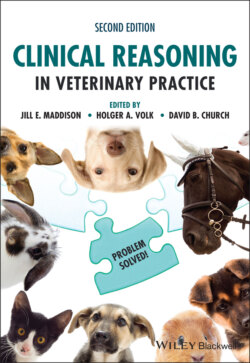Читать книгу Clinical Reasoning in Veterinary Practice - Группа авторов - Страница 68
Secondary GI diseases causing vomiting
ОглавлениеA large number of secondary GI disorders can cause vomiting. However, most of these can be eliminated with relatively few tests – at least in dogs. Cats are more problematic, especially in the diagnosis of pancreatic and hepatic disease. In Table 3.1, the most important secondary GI disorders are listed with tests that are useful in their diagnosis.
Table 3.1 Secondary gastrointestinal causes of vomiting in cats and dogs.
| Disorder | Clinical pathology that may be useful |
|---|---|
| Pancreatitis | Pancreatic lipase immunoreactivity (PLI), amylase (not in cats), lipase (not in cats), white blood cell (WBC) count, ALP, presence of lipaemic serum |
| Hepatic disease | ALT, ALP, GGT, bile acids, bilirubin, albumin, urea, glucose |
| Renal disease | Urea, creatinine, phosphate, SDMA, urine specific gravity (SG) |
| Hypoadrenocorticism | Na+,K+, urea, cortisol, calcium, glucose |
| Diabetic ketoacidosis | Blood and urine glucose, ketones |
| Toxaemia due to infection | WBC count |
| Hypercalcaemia | Serum Ca2+ (total and ionised) |
| Hypokalaemia/ hyperkalaemia | Serum K+ |
| CNS disease | Cerebrospinal fluid (CSF) analysis (possibly) |
| Dirofilariasis (cats) | Heartworm antigen tests (often negative), eosinophil count |
| Lead toxicity | Blood lead and/or urinary delta‐aminolevulinic acid (δ‐ALA) |
| Hyperthyroidism (cats) | Thyroxine (T4) |
You should consult other textbooks to read about specific details of primary and secondary GI diseases causing vomiting and regurgitation.
